|
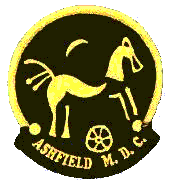
| |
|
SOUND THE ALLAMA GIRLS
IT'S THE SINGING DETECTORIST!
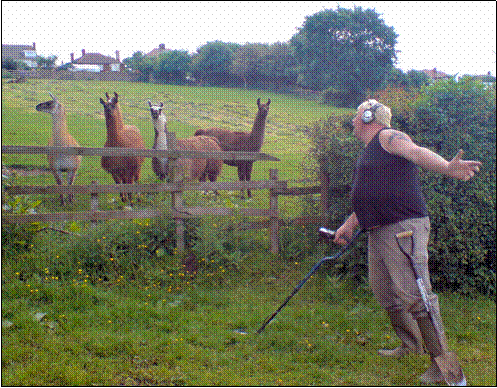
|
How to alarm a Llama
New club member Paul "Wiggo" Wigginton who "sings" for a rock
band gives an impromptu performance to a group of unsuspecting
Llamas whilst on a club search. He particularly takes the fancy
of the one at the end - the "Doll-eye" Llama.
This photograph together with the appalling “Doll-eye”
Llama pun was provided by club member John Radford.
*** |
|
FIND OF THE MONTH MAY 2008
Coin:- Scottish hammered silver penny of John Balliol King of
Scotland 1292—1296. Found by new club member Graham Reedman. His
first hammered silver coin!
Artefact:-
Silver thimble. John Wardle. No photograph available.
|
|

Graham Reedman
 |
JOHN BALLIOL KING OF SCOTLAND
Alexander 111 of Scotland died in 1286 when he had a fall
from his horse and broke his neck. He did not leave a heir so a
committee ruled Scotland acting on behalf of Alexander’s three
year old granddaughter, Margaret, who lived in Norway. Various
claimants to the throne resented this and civil war looked
likely. Edward 1 of England was asked to intervene and his
solution was for his son Edward to marry Margaret. This did not
happen as the child died whilst en-route from Norway to
Scotland.
One of the claimants, John Balliol, gained enough
support to be King including that of Edward 1, however Edward
made a condition of his support that John Balliol swear
allegiance to him. John’s reign lasted for three years until he
made a pact with the French, this so angered Edward that he
waged war on the Scots. His ruthlessness earned him the name
“Hammer of the Scots”. John eventually surrendered and was
imprisoned in the Tower of London until 1299 when he was allowed
to go to France. He lived the rest of his life on his family’s
estates in Picardy.
*** |
Other finds for May
 |
 |
 |
 |
 |
Silver boot
Dennis Brown |
Spindle Whorl
John Radford |
Crotal bell
John Wardle |
Charles11
three-pence
John Radford |
Henry111 penny
John Radford |

Sherwood Forester
badge. |
BADGE
This hand made Sherwood Foresters badge was found by Dennis
Brown. A considerable amount of time and expertise has gone into
the making of it, possible it was a keepsake for a loved one. On
the right is a picture of a Sherwood Foresters belt buckle.
*** |

Sherwood Forester
belt buckle. |
|
CLUB RALLY BEST NATURAL FIND. |
|
In June the club held a rally, of the twenty five hidden tokens
twenty three were recovered. The lucky finders received a cash
prize of either £10 or £5 for each token recovered. Also a cup
was awarded to the finder of the “Best Natural Find” this year
the winner was John Radford who found the watch pictured below.
He is being presented with the cup by the chairman, Dennis
Brown.

This is not a wind up. It's quartz. |
 |
FIND OF THE MONTH JUNE
Coin:- Edward1 hammered silver penny, London mint. Mary Severn.
Artefact:- Gold ring. Dennis Brown. No photograph available.
Other finds for June. |
 |
 |
 |
 |
|
Christian
Herald Golden Star Brigade. Award for children readers of the
paper. 1920s to 1950s. |
Queen Victoria Jubilee medallion
1837 to 1897. The oval in the centre would have contained a
paper portrait. Found by John Radford |
Mystery Object made of silver found by Dennis Brown.
Any Ideas! |
Buckle
1660 t0 1720. Found by John Radford.
|
|
LEAD TOKEN FROM ROLLESTON
 This
lead token with the initials J.C. was found on a club search at
Rolleston, Nottinghamshire, by David Hallam. A search of the
census records and directories for the early 19th. century
revealed that only one farmer with the initials J. C. had lived
in Rolleston. This
lead token with the initials J.C. was found on a club search at
Rolleston, Nottinghamshire, by David Hallam. A search of the
census records and directories for the early 19th. century
revealed that only one farmer with the initials J. C. had lived
in Rolleston.
The county directory for 1832 had a Rolleston entry for a farmer named
John Cullen in it. The census return for 1841 shows John Cullen,
a farmer, born in 1781 at nearby Upton, living in Rolleston with
his wife Isabella, aged 55 years, and their family. The 1851
census return shows John Cullen now aged 70 living in Rolleston,
a farmer with 150 acres and employing two labourers. It would
appear that he had married again because his wife is now named
as Elizabeth, 53 years of age.
The 1861 census return paints a very different picture. It shows
the farm being run by John’s eldest son George, 47 years of age,
described as a farmer of 207 acres employing two labourers, a
boy and a dairymaid. John, now 80 and a widower, is at a
different address living with his youngest son Thomas. John died
in 1865 aged 84.
In the census of 1871 George Cullen is shown as a
farmer and living at the Manor House, Rolleston. Of course
this is pure speculation but I would like to think that the
lead token was issued by John Cullen of Rolleston and by its
recovery we have had a glimpse into the
past.
JMBG
*** |
|
ELIZABETHAN
SILVER SEAL TOP SPOON |
 |
CAR BOOT FIND.
This delightful Wild West railway engine was found by John
Radford at a club site where car boot sales are often held. The
train even had its price tag still tied on it, £1.50!
|
|
FROM SPONGE SELLER TO OPTICIAN!
The token, found by Jeff Oscroft and illustrated below,
was shown to Grenville Chamberlain the author of
‘Nottinghamshire Advertisement Tickets’ to record, if required,
for his update of the book. The token, measuring 25.70mm x
1.26mm, has the words M…. PYSER PEOPLES OPTICIANS in three
lines on the obverse and 87 MANVERS ST & OPPOSITE LONG
  ROW
NOTTINGHAM in five lines on the reverse with a hole piercing the
centre of the upper half. Grenville explained its history and
use by saying that it is not a token but an identification disc
or receipt and would have been issued when a pair of spectacles
was left to be repaired. The system was that there were two of
the discs with the same number stamped on both of them, one
would be given to the customer to be produced when collecting
the repaired spectacles and the other attached to the repairs.
Jeff’s example does not have a discernable number on it,
possibly it had been worn away or unused and not stamped. ROW
NOTTINGHAM in five lines on the reverse with a hole piercing the
centre of the upper half. Grenville explained its history and
use by saying that it is not a token but an identification disc
or receipt and would have been issued when a pair of spectacles
was left to be repaired. The system was that there were two of
the discs with the same number stamped on both of them, one
would be given to the customer to be produced when collecting
the repaired spectacles and the other attached to the repairs.
Jeff’s example does not have a discernable number on it,
possibly it had been worn away or unused and not stamped.
Research into the optician, Morris Pyser, proved to be of
interest. In 1851, aged 22 years, he lived at 7, Shakespeare
Street, Halifax as a lodger. He was born in Poland (then classed
as Germany) and employed as a Hawker of Sponges. By 1861 he was
married to Eliza Jane, a Nottinghamshire girl, they lived at 69,
Northampton Street, Leicester. Morris was then described as a
Tobacconist. In 1871 he had moved to Queen Street, Sneinton,
Nottingham, and was working as a General Dealer. 1881 Morris
was, by now, a British subject and an Optician living at 87,
Manvers Street, Nottingham, with Eliza and seven boarders. In
1885 the couple had moved to 58, Goose Gate, Nottingham, his
occupation was given as Jeweller, Optician and Newsagent. The
last entry for him, aged 66, is in 1895 when his death was
recorded at Prestwich in Lancashire.
The wording of the obverse of the disc seems odd - 87 MANVERS ST
& OPPOSITE LONG ROW. Manvers Street was and is off Carlton Road
but ‘opposite Long Row’ is vague and does not seem to be a
permanent address, perhaps it was a market stall?
Although not strictly an advertising ticket Grenville had the
identification disc/receipt recorded already but did not have an
example in his collection, Jeff soon remedied this and gave him
his
disc.
JMBG
CLAUDIUS 11 GOTHICUS
Claudius 11 Gothicus was born in Illyria in A.D. 214 his
parentage is obscure. He rose as a statesman and soldier and, in
A.D. 259, Emperor Valerian made him the general in chief of all
the Lower Danube. He is believed to have given his assent to the
assassination of Gallienus and succeded him in A.D. 268.
His exploits in the field against the different tribes of barbarians
known collectively as Goths earned him the name Gothicus.
Unfortunately in A.D. 270 when aged 56 he died of a plague that
the barbarian hoards had carried with them onto the battlefield.
His short reign only lasted two years.
 
Commemorative A/E Antoninianus struck after his death.
Found by John Gough on a club search.
*** |
|
WELCOME BACK DARREN
The stunning gold medieval clasp lock, pictured below, was found
by Darren Hoyle on a recent club search in Nottinghamshire.

1.
2.
3.
4.
1. Front
(?) view of clasp lock with a five pence coin for comparison.
All views are about 1½ times actual size. The
clasp lock measures 17mm.
X 13mm. X 4mm.
2. Rear
(?) view.
3. End
view showing ‘keyhole’.
4. Opposite
end view.
The only other example of a similar clasp lock to be
found was in the Fishpool hoard discovered about eighteen miles
away from the site of Darren’s find.
Darren had only rejoined the Ashfield Club two weeks
previous to finding the clasp lock after a break in membership
caused by work commitments. The find was made on his first club
search after rejoining.
THE
FISHPOOL HOARD
Details of the Fishpool hoard taken from the AMDC newsletter
number 2, Summer, 2000.
THE
FIND
On the 22nd., of March, 1966 the largest hoard of medieval gold
coins to be found in England was unearthed by builders at
Fishpool. The hoard included several hitherto unknown coins of
Edward IV and some high quality jewellery. The jewellery
comprised of a heart shaped blue and white enamelled brooch (the
colours of the House of Lancaster), an amethyst pendant, a
sapphire roundel, a quantity of gold chain,
a gold padlock (which is the only known example of its kind)
and four finger rings.
The coins, 1,237 in all, were
all gold. The English coins were nobles, half-nobles and
quarter nobles of Edward 111 (27), Richard 11 (12), Henry IV
(38), Henry V (266), Henry VI (606) and Edward IV (63 all in
mint condition). There were also 33 Anglo- Gallic salutes of
Henry VI, one demi and 12 lions of James 11 of Scotland
(1436-60), 11 ecus of Charles VI 1 of France (1422-61) and 166
coins of the Duke of Burgundy, mainly riders of Philip the Good
(1419-67), also two forgeries of Henry VI English nobles with
cracks in the gold outer plating exposing the base core.
CORONER'S INQUEST.
On the 15th.-16th. of December, 1966, at Mansfield, the
Nottingham District Coroner Mr. C.A.Mack held an inquest into
the Fishpool gold hoard and the jury returned a finding of
'Treasure Trove'. Mr. Mack also ordered that the papers
concerning the inquest be sent to the Director of Public
Prosecutions with a view to possible proceedings to be taken
against four of the five men who had found the hoard. He also
advised the British Museum not to consider them, for one
moment, entitled to receive one penny reward for their find.
However the fifth man, Bernard Beeton received £1,485 and
had 85 coins returned to him, and a ‘lucky little boy',
Master D. Welham who had wandered on to the site received the
four of the coins he had picked up.
EXPERT OPINION?
Marion Archibald, assistant keeper of coins at the British
Museum, said that she believed the hoard was deposited in the
ground in early 1465. Other opinions give the date as between
early 1464 and early 1465. Either just before or just after the
battle of Hexham 15th. of May 1464 when the Lancastrians were
defeated by the Yorkists (Wars of the Roses).
When it was interred the hoard would have been worth £400.
Miss., Archibald said in her opinion that the gold had been
hidden with the intention of retrieval, it had been hidden in
some sort of a container as indicated by the coins being stacked
in neat piles when found.
In the final event the four men received
ex-gratis awards of £5,228, £4,172. 10s., £2,501. 10s. and £244
- substantially less than the value of their finds. The
jewellery and the bulk of the coins were retained by the British
Museum.
THE
ELUSIVE MR. THOMPSON
Fifty four of the coins were recovered from a firm of antique
dealers who had paid £23,610 for them from a man giving the name
Hewlitt Cosgrove Thompson, from Northampton, who told them that
the coins were from his grand-fathers collection. Mr. Thompson
was never traced. Two coins were recovered from a London dealer
and one coin was brought back from Denver U.S.A. having been
recovered from the brother of one of the workmen on the building
site where the hoard was found. It makes one wonder how much
more of the hoard went missing, and what its full content
was.
JMBG
JEWELLERY
FROM THE FISHPOOL HOARD
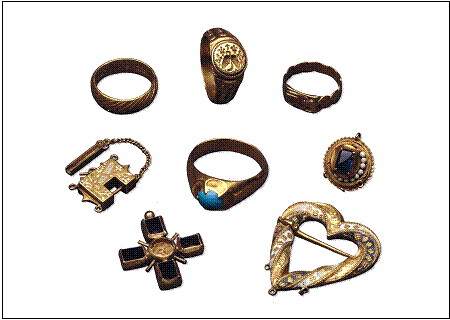
Copyright Trustees of the
British Museum.
***
I was handed the following poem in a pub a some time ago.
Although it has nothing to do with either the club or our hobby
I thought it worthwhile to include it in the newsletter.
JMBG
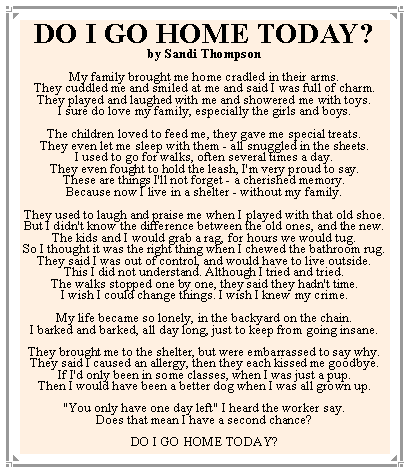 |

Anthony James |
NEW MEMBERS
Anthony James is a postman who originally took up metal
detecting as a teenager. He then had a break to pursue other
activities and returned to the hobby about three years ago. He
uses a Garrett Ace 250 and a Minelab S E.
Richard Waite is retired and has been detecting for about two
years.
He uses a Hawkeye detector.
|

Richard Waite |
|
FIGURES ON ROMAN COIN REVERSES
The next few issues of this newsletter will have drawings
of figures that may be found on the reverse of Roman coins. It
will be in no way a complete catalogue of all the reverse
figures or even of all their poses. I hope it may help club
members to identify, together with the book ‘Identifying Roman
Coins’, the odd Roman ‘grot’ when it is recovered. |
|

1. ABVNDANTIA 2.
AEQVITAS
3. AETERNITAS 4.
AFRICA
5. ANNONA |

6. APOLLO
7. BRITANNIA 8.
CERES
9. CLEMENTIA 10.
CONCORDIA
|
|
1. ABVUNDANTIA. Abundance,
plenty. Female figure with a cornucopia (horn of plenty) and
sometimes ears of corn.
2. AEQVITAS. Equity, plenty. Female figure with scales and
cornucopia, sometimes with a sceptre.
3. AETERNITIVS. Eternity, stability. Female figure with globe,
Sol, the sun god is sometimes depicted.
4. AFRICA. Female figure with various objects and an elephant
trunk on the front of her head dress.
5. ANNONA. Corn harvest. Female figure with cornucopia,
sometimes ears of corn, a corn bucket and the prow of a ship.
6. APOLLO. Son of Jupiter. Male figure with various objects
including bow and arrow, serpent, lyre, harp or a pastoral
crook.
7. BRITANNIA. Britain. Female figure, seated left foot on a
rock, head resting on her right hand. In her left hand is a
spear, by her side is a shield.
8. CERES. Goddess of agriculture. Female figure usually holding
torch and corn ears, sometimes seated.
9. CLEMENTIA. Clemency, mercy. Female figure seated holding
branch and sceptre. Sometimes leaning on a column.
10. CONCORDIA. Harmony. Female figure sometimes seated holding
patera and cornucopia or sceptre. As CONCORDIA MILITUM she
holds two standards.
***
|
BOOKS

IDENTIFYING ROMAN COINS by RICHARD REECE and
SIMON JAMES.
This is a small book of only
48 pages but don’t be put off by that, its usefulness by far
outstrips the lack of pages. The 166 line drawings of the
commonest types of Roman coins together withdescriptions will
enable metal detectorists to quickly identify their finds. It is
subtitled “A
Practical Guide to the Identification of Site Finds in Britain"
and it certainly lives up to that.
I bought my copy of the book in 1986, but I am unable to
remember what I paid for it. This edition is now out of print
but was reprinted in 1994 by Seaby, and copies can be bought
for £5.95 from Regton at Birmingham or on line.
A really useful addition to a metal detecting library of
reference books.
***
SPINDLE WHORLS
A
request from a fellow detectorist Mark Powell was posted on the
UK Detector Net for help to conduct a national survey of lead
spindle whorls. The aims of this survey are to record the
regional variations in pattern types, numbers found and rarity.
Also to start a national identification and classification
system for spindle whorls. Mark would like images all spindle
whorls, no matter if decorated or not, and in any condition. The
details required are images of both faces and a side view of
each whorl and, if possible, the diameter, weight and where it
was found ( Just the county will do). Images and data to
spindlewhorls@btopenworld.com. Club members who require
assistance with photographing, measuring, weighing and the
internet please contact:- John.Gough at a club search or meeting
or on
john.gough1@ntlworld.com.
*** |
 |
ARTICLES WANTED FOR NEWSLETTER
The figure on the left is one of the older club members thinking
hard about an article for a future issue of the club newsletter.
He is not named for legal reasons.
Seriously, articles,
suggestions, photographs and ideas are urgently wanted for the
newsletter. Apart from two or three members who contribute
regularly, other club members do not seem to be interested. The
more contributions that come in, the more frequently the
newsletter can be issued.
If this photograph inspires
anyone to do anything for the newsletter please contact John
Gough at a club meeting, on a club search or by email to
john.gough1@ntlworld.com. Thank you.
JMBG.
|
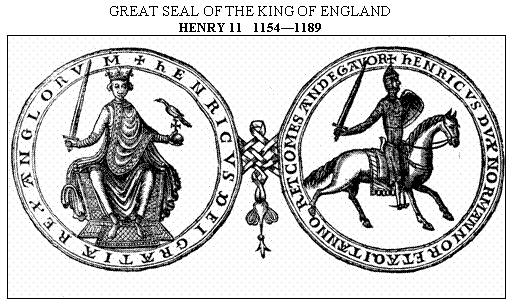

*****
|
|
